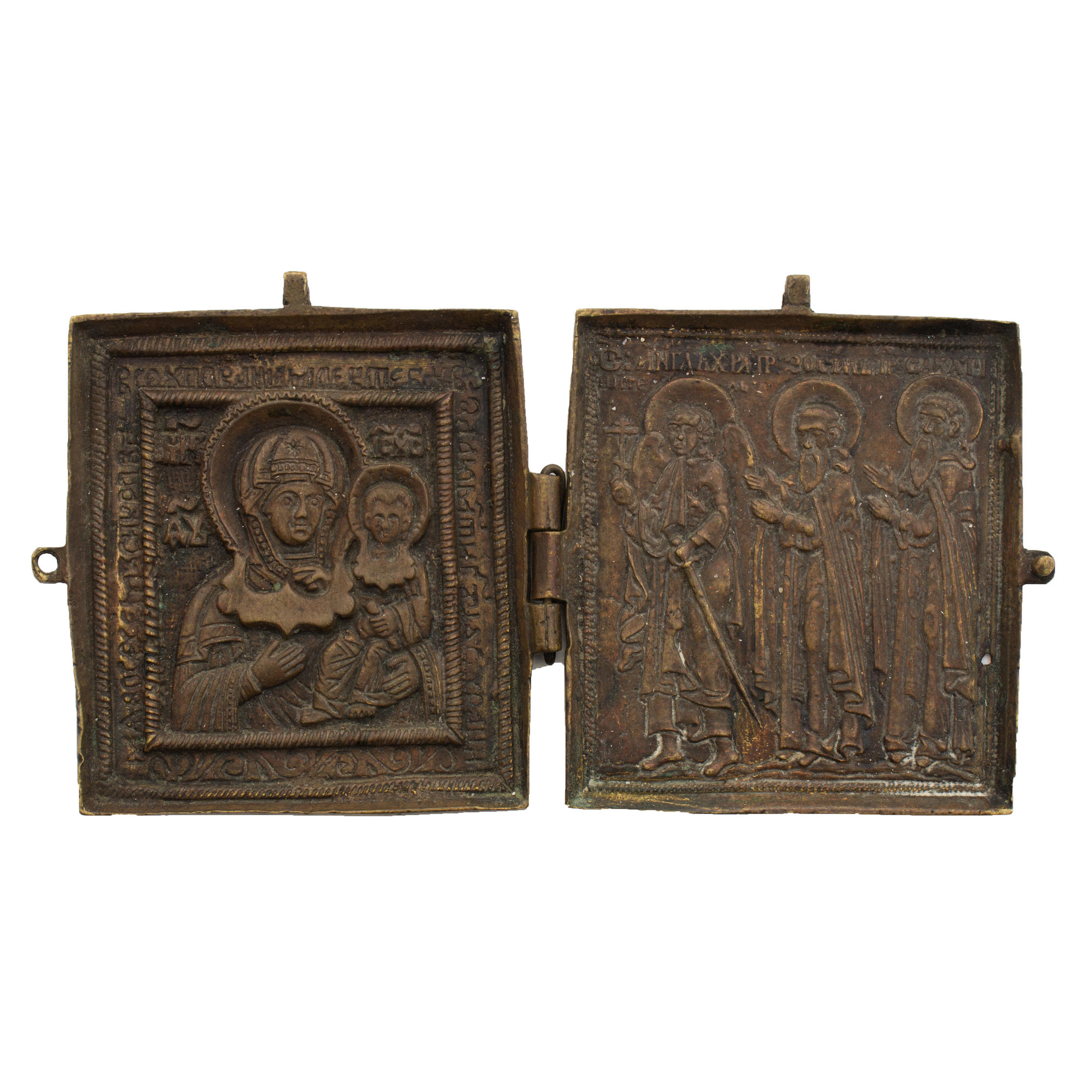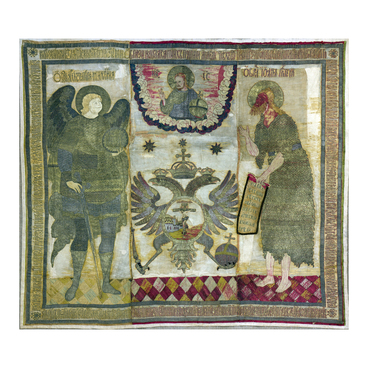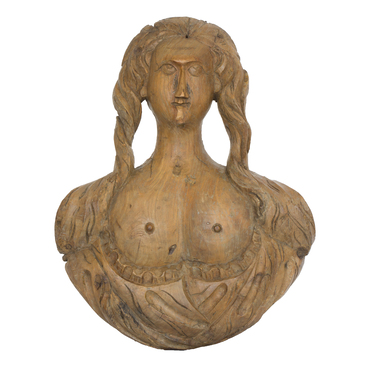This copper-cast folding icon entered the museum in 1957.
Folding icons are small icons consisting of two or more parts. They fold and clock with a special clasp. In antiquity, they were intended either for wearing or for travelling, as they are small, durable and convenient. Usually folding icons were cast from an alloy of copper, and very rarely carved from wood.
This object is a folding icon of Old Believer copper casting ‘Virgin Hodegetria. Selected Saints.’ On its left fold is the image of the Virgin Hodegetria of Smolensk. On the right, there are relief images of a guardian angel, Zosimas and Savvatiy of Solovki. A prayer is cast on the margins:
‘ВСЕ УПОВАНІЕ МОЕ К ТЕБЭ ВОЗЛА (ГА)Ю М (А)ТИ Б (O)ЖІЯ СОХРАНИ / МЯ ВO СВОЕМЪ СИ КРОВЭ’ - I lay all my hope on You, Mother of God, keep me under Your protection.
‘ВСЕ УПОВАНІЕ МОЕ К ТЕБЭ ВОЗЛА (ГА)Ю М (А)ТИ Б (O)ЖІЯ СОХРАНИ / МЯ ВO СВОЕМЪ СИ КРОВЭ’ - I lay all my hope on You, Mother of God, keep me under Your protection.
The icon is made of an alloy of copper with 17-century moulds.
The first examples of folding icons were brought to Russia from Byzantium. People demanded icons to be not only in princely palaces, but in every house. In a short time, this problem could only be solved by replicating metal icons in foundries. Masters who were engaged in the creation of bronze and copper icons for Christians were everywhere. The first examples of Russian small statuary were completely based on the Byzantine culture, foundry workers copied the Byzantium examples not only in technique, but also in iconography.
The first examples of folding icons were brought to Russia from Byzantium. People demanded icons to be not only in princely palaces, but in every house. In a short time, this problem could only be solved by replicating metal icons in foundries. Masters who were engaged in the creation of bronze and copper icons for Christians were everywhere. The first examples of Russian small statuary were completely based on the Byzantine culture, foundry workers copied the Byzantium examples not only in technique, but also in iconography.
The second peak of the distribution of copper cast, especially durable and fireproof icons occurs in the 15-16th centuries, and is associated with frequent fires. In the same period, the iconography of many new canonized Russian saints was formed.
The next period of development of cast icons is associated with the movement of Old Believers, when in the second half of the 17th century, after a split in the Russian church, opponents of the reforms of Patriarch Nikon were forced to flee to the uninhabited outskirts of the country and hide from persecution of authorities in dense forests. In such difficult conditions, it was the Old Believers who preserved and continued the tradition of cast statuary. The heyday of casting was caused, among other things, by practical necessity. Old Believers needed durable and compact icons, convenient for transportation and storage, and the usual wooden icons were too bulky and quickly deteriorated.
Old Believers wore such icons on their bodies, and this was not their innovation. Long before the split in the Russian church, the concept of a ‘travel icon’ appeared - an icon that could be taken with you on the road, on pilgrimage, on a military campaign. In the 17th century, all warriors wore folding Orthodox images on their chests.



